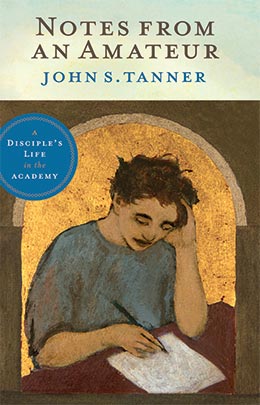Grave Thoughts on Greatness and Goodness
John S. Tanner, Notes from an Ameteur: A Disciple’s Life in the Academy (Provo, UT: Religious Studies Center; Salt Lake City: Deseret Book, 2011), 108–10.
I visited my father’s grave over the Memorial Day weekend. Dad is buried in the Salt Lake City Cemetery, where his father served as sexton and where my father worked as night watchman while attending college. Dad used to quip that he would “tuck in the dead” at night. I too worked in a cemetery to put myself through college—mowing, watering, and digging graves.
I am drawn to cemeteries. I like to visit the burial sites of ancestors, friends, and heroes. I like to read gravestones, imagining the lives of those whose remains lie buried there. Walking through the “regions of the dead” fills the mind with “thoughtfulness that is not disagreeable,” Joseph Addison remarked upon visiting Westminster Abbey, where he found in Poets’ Corner “poets who had no monument, and monuments which had no poets.” Cemeteries invite us to regard life from an eternal perspective, sub specie aeternitatis. They bid us ponder what will outlast this life—what will be forgotten and what will be celebrated at that day when the living and the dead “shall all of us be contemporaries, and make our appearance together.” [1]
My father had very clear beliefs about what would endure into eternity and designed his headstone to reflect his convictions. On the back of the stone are engraved the names of his children. On the front is an engraving of the Salt Lake Temple, along with the date of his marriage. And under his name is etched a single sentence, which he felt came to him by revelation: In God’s divine plan, all achievements will fade into oblivion except personal righteousness.
This lapidary insight was etched deep in Dad’s heart, though it took a lifetime to erase from his heart the simultaneous desire for fading worldly achievements. Like most people, Dad wanted to be a success. He wanted his children to be successful too—leaders among our peers, top students, team captains, and so forth. Yet each of us knew that far deeper than his desire for us to be great was his desire for us to be good. I too have tried to impress this priority on my children. I often tell them that while it’s good to be great, it’s greater to be good. For in God’s eyes, goodness is true greatness.
Which is why I sometimes balk at the title of Jim Collins’s bestseller Good to Great. [2] This is not because I disapprove of aspiring to excellence but because sometimes individuals and institutions jettison a commitment to being good (in a moral sense) in the headlong, single-minded quest to become great (in a worldly sense). I am persuaded that we at BYU will never be great in the sense the Lord cares about if we ever cease striving to be good. Morally, good is not the enemy of great. Goodness is the enabling condition of true greatness.
Ruminating on my dad’s headstone, I thought of Sarah Smith from Golders Green in The Great Divorce by C. S. Lewis. Sarah Smith is the deliberately ordinary name Lewis chose for a figure he meets in heaven on an imaginary guided bus trip from hell to heaven. When he sees Sarah Smith, she is a being of astonishing resplendence and beauty. He naturally assumes she is Mary or one of the great saints. Instead, he learns that she is a person “ye’ll never have heard of” on earth. Nonetheless, in heaven, “she is one of the great ones.” His guide reminds Lewis “that fame in this country and fame on Earth are two quite different things.” Sarah Smith is great because of the goodness that flowed from her. Her love transformed every child into a son or daughter and ennobled every adult. It now flows from Christ through her into all Creation. [3] Possessed of divine love, she is one of the great ones, the Beatrice of Lewis’s journey from hell to heaven.
As I walk through this pioneer cemetery, I realize that there are many great ones here. Some are well known, like President Harold B. Lee and President Gordon B. Hinckley, whose graves lie nearby. And some are not. They lived honorable but inconspicuous lives. Yet “the effect of [their] being on those around [them] was incalculably diffuse,” as George Eliot writes in the conclusion of Middlemarch, adding, “The growing good of the world is partly dependent on unhistoric acts; and that things are not so ill with you and me as they might have been is half owing to the number who lived faithfully a hidden life, and rest in unvisited tombs.” [4]
Notes
[1] Joseph Addison, Westminster Abbey (Hoboken, NJ: Bibliobytes, 199-?).
[2] Jim Collins, Good to Great (New York: HarperBusiness, 2001).
[3] C. S. Lewis, The Great Divorce (New York: HarperCollins, 2001).
[4] George Eliot, Middlemarch (Oxford: Oxford University Press, 1986), 682.
